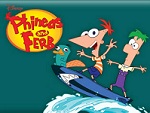
Rethink. Retool. Readjust.
As more and more people do their banking technologically rather than in person, banks will need to adjust their branch strategy. They will need to morph into more consultative centers for personal and small business customers – with a human touch.
Personal and business banking is more complicated these days. Banks that can adjust to having branch staff able to deliver prompt, relatively unbiased and trustworthy counsel to customers will grow market share. If it’s customers that they give advice to, you may ask, “How are they going to improve share?” Well, if a checking customer wants to buy a home or a new car, and isn’t sure how to do it or what to look out for, you have a chance for a deeper relationship. And if the experience is helpful, your customers will talk to their friends. And here’s a crazy thought – advertise this consultative service as free, and open to anyone who wants advice, not only your existing base. Who knows, some of those non-customers might just want you to help them with that mortgage or SBA loan.




























